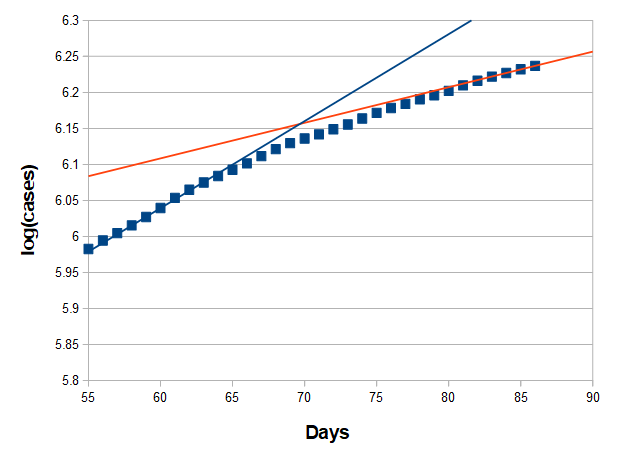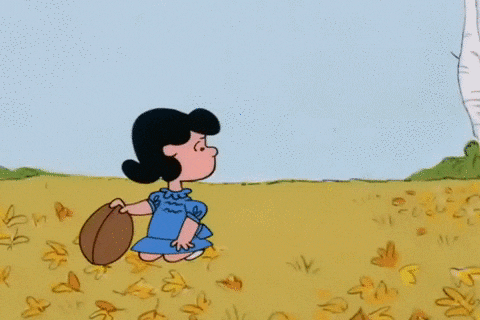I don’t disagree with that assessment.
Then you should probably agree that with our current “plan” in place, sending kids back to school in 3 months (assuming nothing else changes) is fucking insanity.
A thing that’s puzzled me is that this does seem to be leveling off despite USA#1 having a halfassed shutdown and a premature opening up. I expected to see some kind of uptick since we started reopening weeks ago, but every time I look at the numbers it continues to slowly level off despite the fact that we keep learning about how crazy infectious it is.

My completely uninformed wild speculative theory is that a lot of people have a strong innate immune response to this. I’m not putting a lot of stock into this so don’t @ me when I turn out to be wrong.
This is an impossible standard to meet. How will you ever know that for sure without waiting and seeing what happens?
It’s easy for you to say that sending children to school is about “having our trinkets”. When children are home from school in a single-parent family, who looks after them?
The Lancet study School closure and management practices during coronavirus outbreaks including COVID-19: a rapid systematic review says this:
The economic harms of school closures are high. A UK study from 2008 suggested that approximately 16% of the workforce are the main caregivers for dependent children and are at very high risk of absenteeism if schools are closed, a proportion that rises to 30% in the health and social care sectors. In the USA, unpublished estimates suggest that 29% of health-care workers have childcare obligations. A 2010 economic modelling analysis of school closures as mitigating interventions during influenza outbreaks suggested that 4-week or 13-week closures reduced the clinical attack rate minimally but markedly increased the economic cost to the nation, in particular through forced absenteeism by working parents, in the UK, France, Belgium, and the Netherlands. Costs have been estimated to be as high as 0·2–1% of UK national gross domestic product (GDP) per annum for school closure for 12–13 weeks, or up to 3% of GDP for an 8-week closure in US studies.
Health-care worker absenteeism makes COVID worse, obviously. You going to send them to daycare instead? That better than school?
These aren’t “trinkets”, there are real avoidable costs here.
I think that is what he is trying to say. This shouldn’t be up to us to send our kids into an unknowable situation like this. What should happen to the single-parent families? The government should do its job and provide a safety net during an unprecedented event.
What “safety net”? In-home carers for every child? Sending them to daycare is the same as sending them to school.
Also, it’s summer, and a lot of coronaviruses are seasonal for reasons still not fully understood.
My money is still on coming in from cold, dry air to hot, dry air - which plays havoc with your mucus membranes. Also the virus prefers dry air, and hates sunshine.
This seems to be a matter of considerable debate. I mean, we barely understand why the seasonal flu is seasonal.
I’m just not interested in getting emotional about how stupid everything currently is. I want to explore the idea of what a reopening plan should look like under competent leadership under the possibility that a vaccine might be four years away.
Why though? We don’t HAVE competent leadership. What is the point of the thought exercise? Shouldn’t we be looking towards solutions that we actually can affect?
It’s all a pointless thought exercise unless you mean what you can actually do. Stay home? Avoid crowds? Wear a mask? Move to Canada?
Great, well then it should be trivial to suggest even one solution to the problem.
I’m not going to respond to numbers this frankly idiotic. Like there’s no way we can reach common ground if you stubbornly refuse to educate yourself on what the information actually is on COVID spread between kids. For example, from that BMJ article I linked the other day:
A case study of a cluster in the French Alps included a child with COVID-19 who failed to transmit it to any other person, despite exposure to more than a hundred children in different schools and a ski resort. In New South Wales, Australia none of 735 students and 128 staff contracted COVID-19 from nine child and nine adult initial school cases despite close contact.
Here’s another systematic review, conclusion in full:
The conclusion of this systematic review is that children are unlikely to be the main drivers of the pandemic. Opening up schools and kindergartens is unlikely to impact COVID-19 mortality rates in older people.
No matter how many times I post stuff like this, you come back with “well OK but what if there’s a massive outbreak that rips through a school of 1000 children and then half of them bring it home to their parents?”. How much shit do I have to link before you accept that this doesn’t fucking happen?
Cue another 17 paragraph post of “Dude. Actually. WE DON’T KNOW” containing zero reason why I should believe you over experts. It’s always just bluster, butwhataboutmasks and pretending there are no real costs to keeping kids home (“trinkets”) because if you accept that there’s a real tradeoff here, the next question is going to be “in negotiating this tradeoff, why should we accept your risk assessments over that of experts” and you have no answer for that.
Edit: By the way, there are question marks over whether staying home is even safer for kids, especially in single parent scenarios where the kids will have to go out on shopping trips etc. Analysis of household cluster source shows that parents are by far the most likely way for children to acquire COVID. For some reason you just point blank refuse to accept that it’s very difficult for COVID to spread through a population of children, even though that’s what both logic and empirical reality are suggesting.
What is the point of hanging out on a political forum?
The truth is that the only way I personally could possibly affect anything would be to do some pretty horrible things. I won’t say the quiet parts out loud, but talking about something else means I spend less time thinking about such things.
Maybe I should just give up and start openly rooting for things to be as bad as possible just to prove how stupid everything is. I’m already halfway there.
I’ve been wondering about that, too. Another explanation that I think could make sense is that awareness alone gets us pretty damn far, even if places are open. Given how we think most people get infected, simply staying home when you’re sick, not coughing/sneezing in public, and wearing masks might be enough to keep R under 1.

I mean, we barely understand why the seasonal flu is seasonal.
I literally mentioned that in my post. But yet we know it is seasonal.
There have been studies that suggest absolute humidity (the amount of water vapor in the air) plays a role. Hot air can hold a lot more water vapor. We know sunshine is a huge deterrent. There is compelling evidence that the combination of cold, dry air outside and dry heated air inside in winter plays havoc with your mucus membranes.
In your article when I read something like:
“Summer is not going to make this go away,” says Prof. Dionne Gesink, a coauthor and epidemiologist at Dalla Lana School of Public Health. “It’s important people know that. On the other hand, the more public health interventions an area had in place, the bigger the impact on slowing the epidemic growth. These public health interventions are really important because they’re the only thing working right now to slow the epidemic.”
I start to wonder about the motivations of the authors and how much, maybe like the CDC earlier telling us masks weren’t necessary, they’re more motivated to make sure people don’t get complacent and assume summer will just magically kill the virus - which I have never maintained.
I used to work in statistics. I understand how you can run study after study with different methodologies until you find the chart that fits the message you want to convey.
Two new studies (article is from May 5) offer compelling evidence that children can transmit the virus. Neither proved it, but the evidence was strong enough to suggest that schools should be kept closed for now, many epidemiologists who were not involved in the research said.
The viral load one is concerning for sure and might justify being more cautious with opening schools, although the link between viral loads in children and infectiousness is a bit speculative. It’s hard to square the idea of children being just as infectious with the household studies which found that children were rarely the index case.
The Science paper is weird because they consider the question of how likely children are to be infected but as far as I can tell they don’t then consider how infectious the child is in turn, which seems like the critical question. For example:
In the model, the population is divided into three epidemiological categories: susceptible, infectious, and removed (either recovered or deceased individuals), stratified by 14 age groups. Susceptible individuals can become infectious after contact with an infectious individual according to the estimated age-specific susceptibility to infection. The rate at which contacts occur is determined by the estimated mixing patterns of each age group.
But not according to the age-specific level of infectiousness? Like if you don’t consider that then you risk taking a reality where parents are generally the ones giving it to their kids and spreading that blame out over the child’s contacts at school.
Eta: Forgot you wanted one idea for the parents who depend on school for childcare. UBI instead of corporate bailouts.
The problem of healthcare workers (or critical workers in general) unable to work because they have to look after their children is not solved by giving them money.
Math of large numbers. The hugiest states for cases got their shit together. Those drops are still cancelling out growth in other states.
On top of that, a lot of people are staying the fuck home or at least going out way less than normal. Remember the covidiots on the news are not going to concerts and not going back to a fully open rest of society. Whatever infection chains are started are being stunted. The more confident people get, the more relaxed, the more this thing will grow eventually.